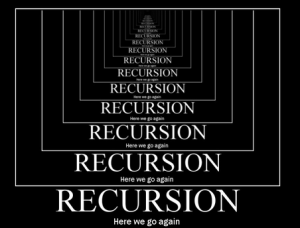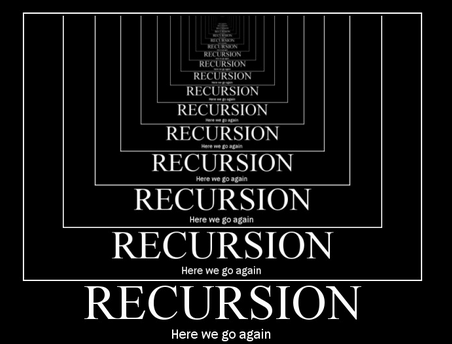
Recursion
The Faculty of Language (2002) is concerned with the idea of recursion, the defining feature of human communication that permits combining a fixed number of words to create an infinite number of expressions, each with their own unique meaning. In terms of language acquisition it seems that children need only be exposed to a limited number of sentences in its own language, before it becomes proficient, that is to say, becomes conscious/able to create those infinite sentences mentioned.
Principles and Parameters
According to Cook (1989), then, we are in possession of an internal ‘universal grammar’, which can be considered ‘ principles’ or certain elements that all phrases must contain. For example, a head parameter, the complements and the pro-drop parameter. Cook suggests that all languages have the same principles of phrase structure, but they differ in the setting for the head parameter. It seems, then, as our UG has already been set, it only needs to be supplied with a few examples which allows “triggering from evidence” in order to apply the principle correctly.
On the whole, however, I found internalising the tenets of UG quite difficult, due to the fact that Cook’s writing is quite dismissive and her wording unhelpful and negative. Lots of no’s and nots, and generally very patronising. She seems to spend a lot of time telling us what not to do, without really telling us precisely what to do either. However, I did just about extract the fact that (grammatically) correct input from a native or non-native speaker would help language teachers set the necessary parameters of UG for their students. I do wonder, though, if it only requires a few examples, why she was not so kind as to provide a simple list for us to follow? What are these mythical few sentences?
Cook states, “As the principles of UG are built-in to the mind, they do not have to be learnt; the learner automatically applies them to whatever language he or she encounters.” I don’t entirely agree. I feel that we need to raise awareness of our innate abilities, otherwise, students will be unable to identity and draw on them. Indeed, I remember back to learning French from the first year of school, and Latin for the second year and realising, “Oh! That’s what my language is!, as in I understood my mother tongue only through the mirror reflection of others.
Also, Cook assumes, then, that upon hearing these correct sentences, learners will automatically acquire them. How do we prove that? Is that to say learners will never make a mistake? Cook does actually elaborate on these sentences saying, “The classroom learner is setting values for parameters from positive evidence; so long as the classroom provides appropriate evidence, paramter setting will take place”. But is hearing a (grammatically) correct sentence (positive evidence) a few times really enough to acquire that language construction? Does hearing or reading a correct sentence mean that learners will actually go on to use the sentences correctly themselves? How do we know? Surely someone’s going to make a mistake? Should we correct those errors (negative evidence)? Or not correct them at all?
Cook maintains, “The learner’s grammar will confirm in one or another to the principles of UG, even if not in the same way as in the first language or the second language or in either of them.”. Ummm. Excuse me? I’m totally lost! Or is she just saying that it is inevitable that langauge learners will make grammatical mistakes when learning a second or third language? Which is something I already know! Similarly, “Error Analysis misses the point if it emphasises the self-contained internal system of the learner’s language rather than seeing it as one of the possible instantiations of human language” is yet another strange statement! Is she saying that if the teacher is aware of the UG of different languages this would be helpful in the language classroom? So bilingual teachers, and teachers who have knowledge of the learners L1 would be able to do a better job with setting parameters than others?
My Take-Aways
– (According to Cook) Grammar is simple, don’t over-think it!
– Emphasise vocabulary
– Provide a few sentences to set learner’s UG parameters
Practical Tips from our online meeting
– Teach collocations, words with associations, to aid vocabulary acquisition
– Re-think feedback and correction
My Questions
– What are these magical sentences that help set UG parameters?
– Is Cook saying that learners won’t make mistakes if they hear these magical sentences?
My Homework
– Read more about UG!
Sources
Hauser, Marc D., Noam Chomsky, and W. Tecumseh Fitch. “The faculty of language: What is it, who has it, and how did it evolve?.” Science 298.5598 (2002): 1569-1579.
Cook, Vivian J. “Chomsky’s universal grammar and second language learning.”Applied Linguistics 6.1 (1985): 2-18. Universal Grammar Theory and the Classroom Experience


I agree with you. But I think Vivian Cook is a man.